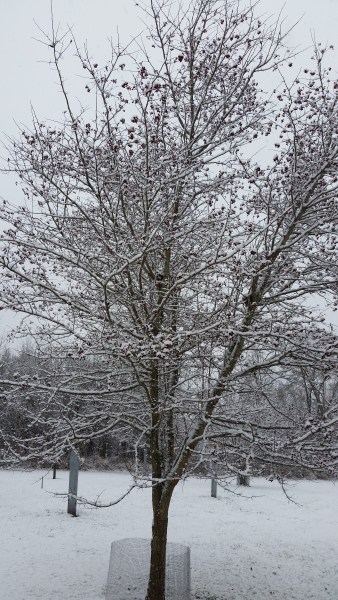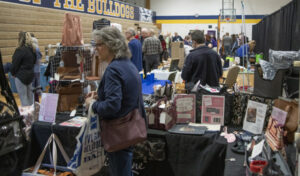
By Jennifer Fairfield, owner of The Garden Mill
If, like me, you want to get some bulbs planted still this year, it looks like we will have at least through the next week or two, if not longer to do so.
You can also force bulbs indoors this winter. Flowers in bloom in your house in March can provide a welcome breath of spring, when it’s still winter outdoors and you can’t really do any gardening. You’ll need to provide your bulbs with a chilling period first – for as long as 12 weeks – so you’ll want to get them started now.
If you’d like more information on how to force bulbs, come into the store or send us an email, and we’ll be happy to get you the details.
Things to do outdoors yet this month:
Once the ground has frozen, pile mulch on top of your perennials to help protect them from the changing temperatures throughout the winter. Frost heave can cause damage to plants when roots are pushed up out of the soil as the soil “heaves” up when freezing causes it to expand.
Frost heave usually happens when the soil thaws and then freezes again. Most plants don’t survive these sorts of conditions, so a good mulch cover can keep the soil frozen during the winter, helping to prevent damage.
If you didn’t get the opportunity to put up wind screens for your evergreens last month (you’re not alone – neither did I), do that soon, while the ground is still soft enough to get stakes in. We’ve already had some pretty strong winds this season, and that wind can really cause evergreens to dry out in the winter, when the ground is frozen, and the trees can’t draw any water from it.
Burlap is a great choice for protecting your trees and shrubs, because it allows some air flow, but provides protection from the worst drying effects of the wind. Drive stakes into the ground before the ground is frozen, and then attach the burlap to the stakes – I use cable ties, commonly referred to as “zip” ties. The burlap screen should be placed along the west and southwest sides of the plant, and possibly all around, depending on where your plants are placed, and how much wind they are getting.
Do not totally cover the plants – leave the top open – so they can get sun.
Wind isn’t the only problem for plants in our yards over the winter – animals looking for food can cause a great deal of damage. The University of Minnesota Extension has a great article on protecting your plants from all kinds of winter injuries from things like animals, wind, ice, snow, and even sun.
All the weather forecasts are saying we may see quite a bit of snow this winter, so knowing how to deal with it to help your trees is important. Heavy snow can weigh down and potentially break branches, but it’s easy to do more harm than good, if you’re not careful.
Use a broom, and gentle upward motions to sweep away the snow. Banging on frozen branches to shake off snow can break them. If we get ice, leave it alone. It is far easier to cause damage to trees trying to remove ice than to actually get it off safely.
Are you getting fresh greens for the holidays, such as a wreath for your front door and roping for your porch railing or fence, or a swag for your mantle (we’ve got some beautiful ones at The Garden Mill). If so, keep them fresh longer by spraying with water when the temperatures are above freezing.
If you are bringing greens inside, including a Christmas tree, you can spray them with an anti-desiccant before bringing them in to help prevent drying. Make sure to follow the label directions, and allow the tree or greens to fully dry before bringing indoors. And don’t forget to put your tree in water and replenish it regularly throughout the season – dry trees can be a real fire hazard.
With the cold temperatures, birds can use all the help they can get in the form of food, water, and shelter. Keep you feeders full, so that the birds don’t have to waste precious energy searching for food.
If you’re not sure what or how to feed birds, The Cornell Lab of Ornithology has a great article to get you started.
Leave birdhouses out all winter, if they are not susceptible to breakage from freezing temps, but be sure to clean them out, if they still have nesting material in them. Birds will be thankful for an empty birdhouse to huddle together in to keep warm at night.
If you’re looking for the perfect gift for the bird lover in your life (or if you’re the bird lover, and want to give people an idea of what to get you), a heated birdbath or de-icer for a birdbath are great options. They make birdwatching during the winter entertaining, while providing birds with a much-needed source of water when it’s in short supply.










